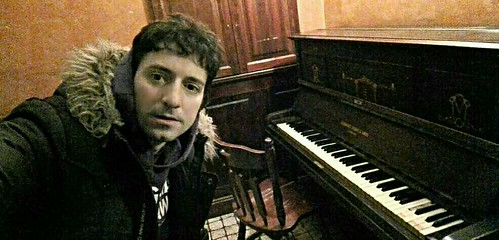The identification of precursor cells in the grownup nervous program raises the probability that medical reward might be achieved through their activation. Scientific desire has mostly targeted on neural precursors in the sub-ventricular zone (SVZ) and the dentate gyrus (DG) of the hippocampus that continually give rise to new neurons [3,7,eight,nine,10,11,twelve,thirteen]. In the SVZ and DG, the endogenous neural stem cell and neural precursor populace can be induced to expand by injury [14,15,16,seventeen,18,19] and by pharmacological manipulations that include treatments with fundamental Fibroblast Development  Issue (EGF), Epidermal Growth element (EGF), Platelet-Derived Expansion Aspect (PDGF), insulin, and perturbation of ephrin signaling [10,eleven,twenty,21,22,23,24,twenty five]. Even so, the lower generate of existing adult neural stem mobile culture methods hinders the Eupatilin manufacturer attempts to recognize novel therapies and elucidate the essential sign transduction steps that regulate neural stem cell quantities in vitro and in vivo. Our earlier perform on Notch, insulin, and angiopoietin signaling in neural stem cells provided us with a sign transduction logic that we employed below to improve neural stem mobile society yields. The Notch receptor and its ligands are identified to regulate the growth and upkeep of neuroepithelial precursors and brain vasculature [26,27,28,29,thirty]. We have formerly described that a novel sign transduction pathway downstream of the Notch receptor expands neural stem mobile populations both in vitro and in vivo [31]. This pathway backlinks the Notch receptor to phosphorylation of STAT3 on the serine residue and a subsequent quick boost in the transcription factor Hes3 that brings about a lengthy long lasting elevation of sonic hedgehog (Shh). Shipping and delivery of the Notch ligand Deltalike-4 (Dll4) to the adult CNS raises the amount of precursor cells in the SVZ and confers behavioral positive aspects in a design of ischemic stroke [31].The angiopoietins (Ang1 & Ang2) are important regulators of endothelial and hematopoietic stem cells [32,33,34,35]. We have formerly demonstrated that precursors in the SVZ and during the brain express the angiopoietin receptor Tie2. One intraventricular injections of Dll4 or Ang2 improve the quantity of Hes3positive immature cells that are broadly distributed outside the house the neurogenic regions in the adult rat7713168 and primate CNS [6]. Similar to Dll4, Ang2 also induces phosphorylation of STAT3 on the serine residue, in fetal neural stem mobile cultures.
Issue (EGF), Epidermal Growth element (EGF), Platelet-Derived Expansion Aspect (PDGF), insulin, and perturbation of ephrin signaling [10,eleven,twenty,21,22,23,24,twenty five]. Even so, the lower generate of existing adult neural stem mobile culture methods hinders the Eupatilin manufacturer attempts to recognize novel therapies and elucidate the essential sign transduction steps that regulate neural stem cell quantities in vitro and in vivo. Our earlier perform on Notch, insulin, and angiopoietin signaling in neural stem cells provided us with a sign transduction logic that we employed below to improve neural stem mobile society yields. The Notch receptor and its ligands are identified to regulate the growth and upkeep of neuroepithelial precursors and brain vasculature [26,27,28,29,thirty]. We have formerly described that a novel sign transduction pathway downstream of the Notch receptor expands neural stem mobile populations both in vitro and in vivo [31]. This pathway backlinks the Notch receptor to phosphorylation of STAT3 on the serine residue and a subsequent quick boost in the transcription factor Hes3 that brings about a lengthy long lasting elevation of sonic hedgehog (Shh). Shipping and delivery of the Notch ligand Deltalike-4 (Dll4) to the adult CNS raises the amount of precursor cells in the SVZ and confers behavioral positive aspects in a design of ischemic stroke [31].The angiopoietins (Ang1 & Ang2) are important regulators of endothelial and hematopoietic stem cells [32,33,34,35]. We have formerly demonstrated that precursors in the SVZ and during the brain express the angiopoietin receptor Tie2. One intraventricular injections of Dll4 or Ang2 improve the quantity of Hes3positive immature cells that are broadly distributed outside the house the neurogenic regions in the adult rat7713168 and primate CNS [6]. Similar to Dll4, Ang2 also induces phosphorylation of STAT3 on the serine residue, in fetal neural stem mobile cultures.
